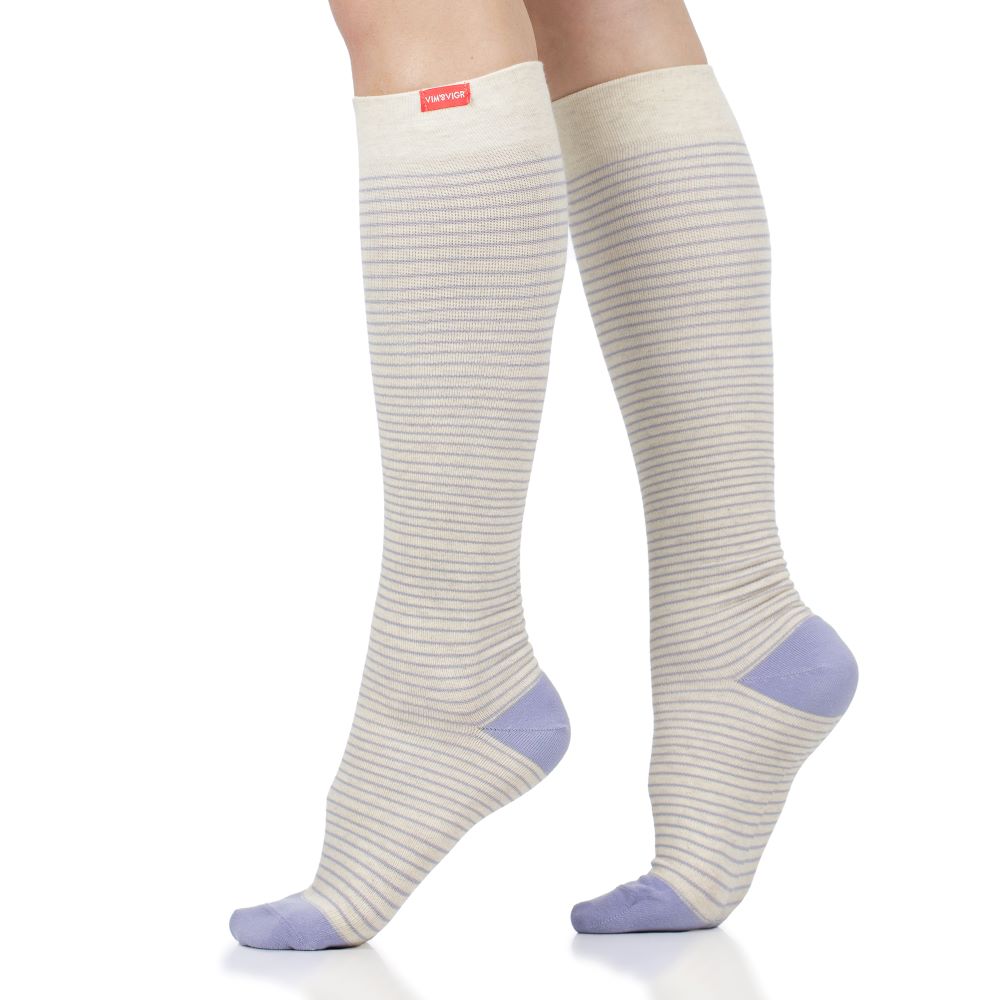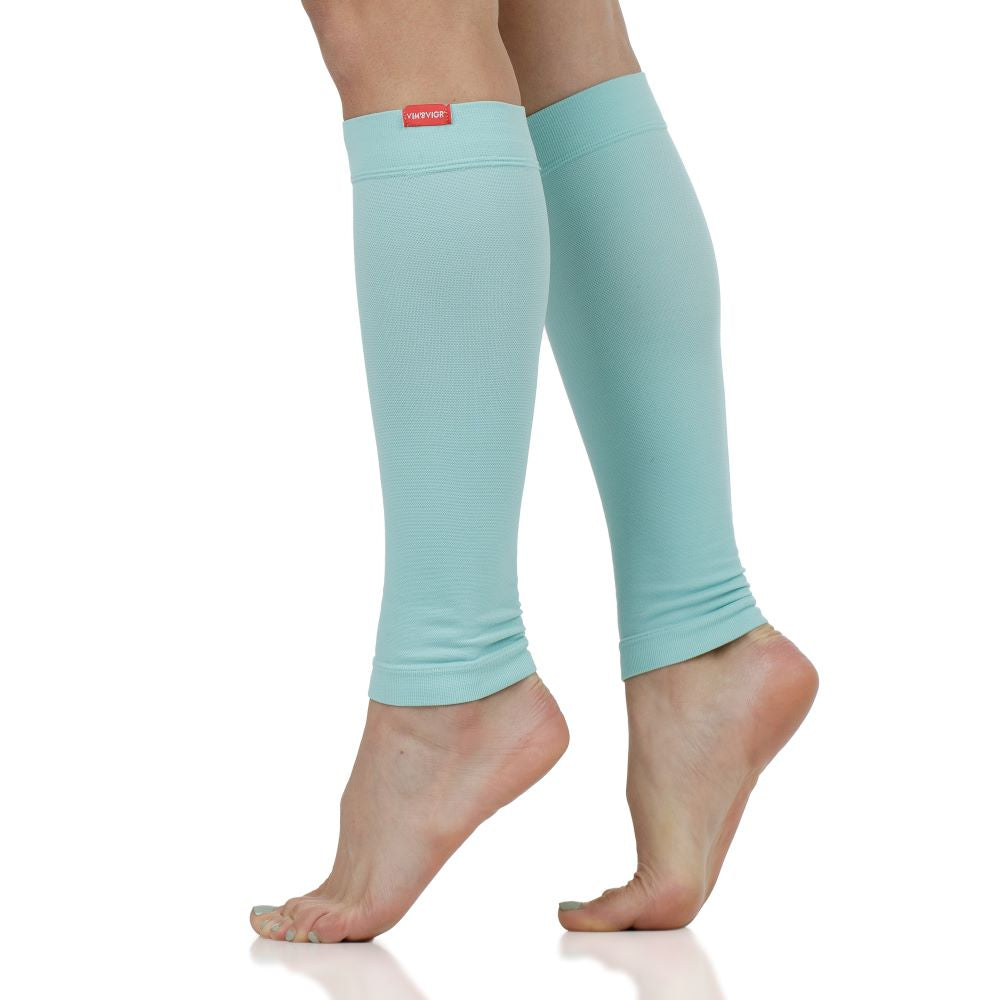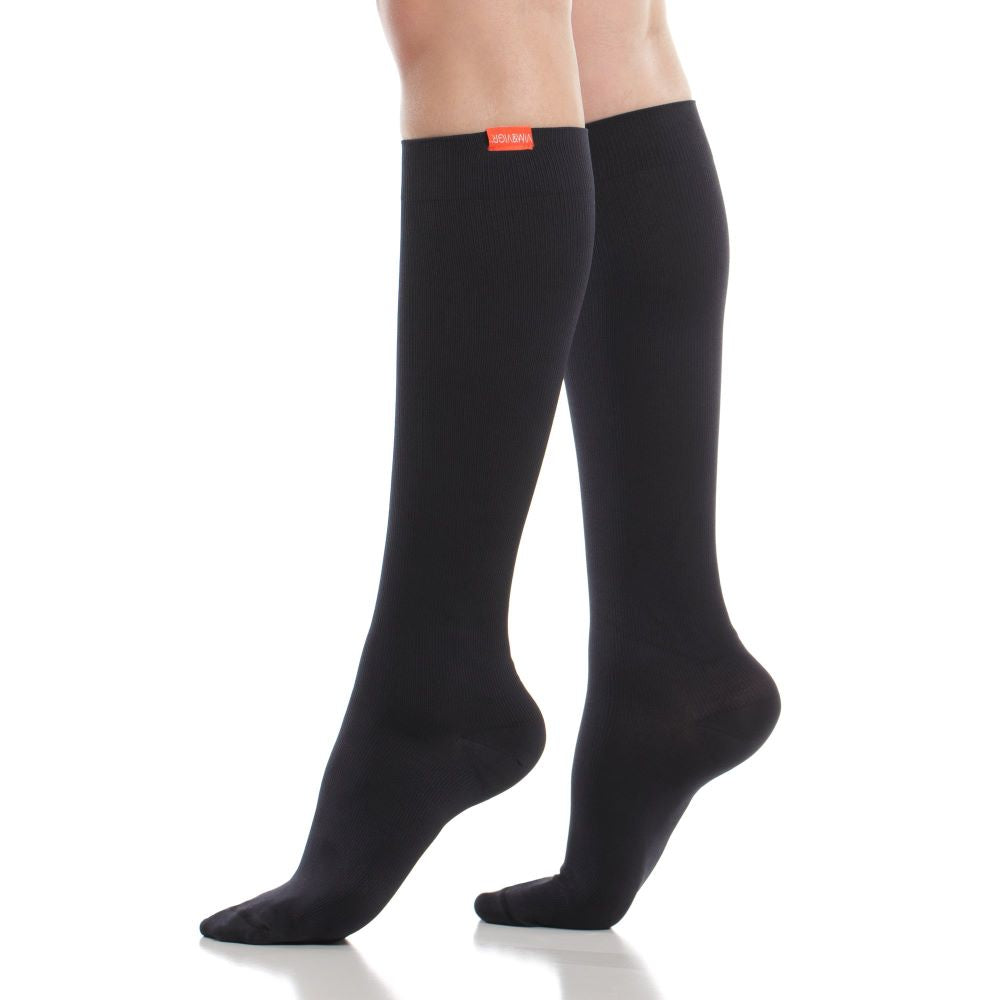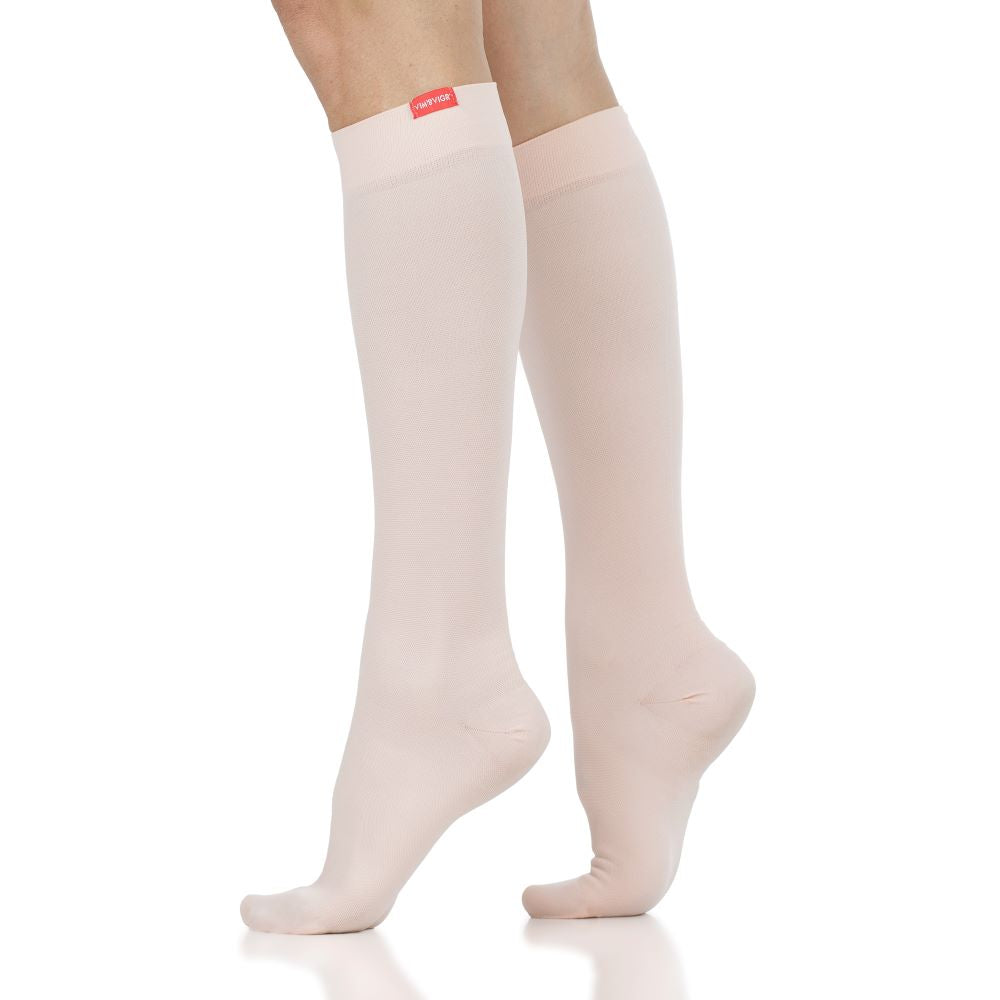What Are Moisture Wicking Socks + What are the Benefits?
Like many other buzzwords, “moisture wicking” might feel like a simple marketing gimmick. What makes some materials better than others at keeping your feet dry and why should you trust the labels, anyway?
When it comes to keeping your feet happy and healthy, fabric choice matters a whole lot. And wicking away moisture is essential in this, along with a good amount of temperature regulation on warmer days. But that’s not all: good-quality moisture-wicking socks help keep away infection, control odors, and reduce the risk of getting blisters when you’re out hiking all day.
So, read on to find out what’s behind the “moisture wicking” buzzword, what are the benefits of moisture wicking socks, and how to choose yours.
What are Moisture Wicking Socks?
First things first: what exactly are these socks? Nothing more but a good-quality pair of garments for your feet, but with the added benefit that the fabric wicks away moisture from the skin’s surface as you sweat and/or get your feet wet.
Moisture-wicking socks are a base layer that allows the skin to breathe. This makes it less likely for your feet to get sweaty in the first place, unless you’re doing some vigorous exercise or hiking in the heat. Once you sweat, a good moisture-wicking sock will remove the wetness and release it into the air. This keeps feet dry and less likely to get uncomfortable and develop blisters.

Understanding Moisture Wicking
You may be wondering why moisture wicking is important. At first glance, it’s the discomfort: that wet feeling, the sloshing in hiking boots, and generally unhappy feet. But, there’s more to it than that.
Allowing your feet to stay wet once you’ve started sweating means that your shoes and socks become a favorable breeding ground for bacteria. This can lead to unwelcome conditions like athlete’s foot, itchy feet, and discomfort. There is also the added risk of blisters forming as the top layer of skin rubs against your socks. Additionally, the bacteria in your damp socks develop bad odors - another unwanted side effect of sweaty feet! Finally, in cold weather, wet socks put you in danger of developing frostbite, especially in very low temperatures.
How does a moisture wicking fabric help? It allows the skin to breathe better by creating a ventilation system that doesn’t let moisture sit on it. This then lets feet dry up as air circulates through the socks and shoes (of course, having good, breathable shoes is also important!). Moisture wicking fabrics effectively remove the moisture from the skin and release it in the air outside.
Key Features of Moisture Wicking Socks
Fabrics like moisture-wicking nylon and merino wool allow your feet to breathe better in humid conditions, prevent them getting sweaty in the first place, and keep down the risk of blisters. Here’s how they work.
Moisture Absorption
The structure of materials like merino wool is such that they absorb moisture as the feet heat up. Think of merino sheep: they stay comfortable in extreme temperatures and their skin doesn’t suffer from the rain. Merino fibers are capable of absorbing up to 30% of their volume in moisture, which they then release into the air. That keeps the socks dry and your feet, too.
Quick Drying
Good quality moisture-wicking socks are not just good at absorbing the sweat from your feet, since that would mean they stay wet instead. Their fabric is breathable, which means that air can come in and go out through the garment. This ventilates the skin’s surface and allows the socks to dry quickly.
Breathability
Because material such as merino wool has a very fine core diameter of each fiber, it allows air to circulate through the sock. This creates a feeling of softness, too, but it mainly keeps the feet dry and gets rid of sweat as soon as it forms on the skin.
Odor Control
The unpleasant smell you may get from sweaty feet after a long run is usually caused by the bacteria that have bred on your skin’s surface in the moist, dark environment created by non-moisture wicking socks. However, wearing breathable fabrics that allow moisture to be released into the air and keep skin dry means that there’s less of a chance of bad odors coming out, too.

The Benefits of Moisture Wicking Socks
As you can see from the above, the alternative to wearing moisture-wicking socks is to risk discomfort, potentially getting blisters, and suffering from bad odors. Here are the benefits!
Keep Feet Dry and Comfortable
Thanks to the way moisture-wicking fabrics let your skin breathe and wick away moisture to release it into the air, your feet stay dry during the hot summer months. In winter or cold weather, keeping feet dry also ensures you don’t get cold or - even worse - run the risk of frostbite.
Reduce Friction and Prevent Blisters
Blisters are most often caused by skin rubbing against the socks, especially when it’s been weakened by moisture. You can prevent this by keeping feet dry and ensuring there’s adequate air circulation in your socks and shoes. Of course, it’s really important to test out your running or walking shoes to see how breathable they are, as well!
Prevent Athlete’s Foot and Fungal Issues
Fungus and bacteria breed in dark, humid environments. If your sweaty feet don’t dry out and socks keep the moisture trapped in on top of your skin, that becomes an ideal place to develop conditions like athlete’s foot.
Letting feet breathe and keeping them dry at all times reduces the risk of bacteria breeding at the skin’s surface.
Temperature Regulation
Moisture wicking goes hand-in-hand with temperature regulation. Merino wool is known to be great at this, since its fibers have enough space between them to allow for continuous air flow. This cools down the surface of the skin when you’re getting hot. In cold temperatures, wicking away moisture ensures there’s no time for feet to start feeling cold. Combine that with warm materials and you’ll have comfortable feet all winter long.
Great for Active Lifestyles
People who hike, run, and play sports in hot weather (or at any time of the year, really!) know what it’s like to suffer from sweaty feet. It’s a recipe for disaster leading to bad smells, potential for fungal infections, and blisters. Wearing good-quality moisture-wicking socks keeps all these risks at bay.
Moreover, active lifestyles also involve a good amount of exposure to wet conditions. You may step into a puddle or have to cross a river during your hike, or you may be skiing on a particularly snowy day. In all these cases, it’s critical that your socks not only remove moisture from the skin so your feet stay dry, but that they also dry up quickly and prevent your feet from getting cold. Moisture wicking materials do just that.

Best Materials for Moisture Wicking Socks
A key element of good moisture wicking is that the fibers in your socks allow the wetness to travel outwards and air to circulate around your feet.
Moisture-Wick Nylon
Many synthetic fabrics don’t let the skin breathe adequately, which leads to moisture sitting on the skin surface and becoming a breeding ground for bacteria and bad odors. Moisture-wick nylon has been engineered specifically to have enough space between fibers to allow air to circulate and moisture to be released outwards. Our range is great for working out in, but also for staying cool and dry on hot days.
Merino Wool
Merino wool is somewhat of an MVP of moisture-wicking socks. The thin fibers of this material allow moisture to dissipate and it’s also been shown that merino wool is excellent at absorbing large amounts of moisture and releasing it into the air. Moreover, merino wool is hypoallergenic and antibacterial, so it gives feet an extra bit of help in staying fungus-free.
Choosing the Best Moisture Wicking Socks
Buying the best pair of socks to keep up with physical activities, jumping into water, or simply getting sweaty feet in the summer can be easy if you know what you’re looking for. We’ve established the benefits and qualities of materials such as merino wool and moisture-wick nylon, but here are a few more things to consider.
Fit and Style
Your socks - whether you go for compression or regular - need to fit well and integrate with your outfit, your shoes, and your overall style. Otherwise, you won’t wear them!
To make sure your compression socks fit right, follow our sizing guide. This is particularly important with compression garments because you need them to fit tight enough to get the benefits of the pressure they apply to the legs.
Cushioning and Arch Support
For running and walking in particular, having some added cushioning can be good for keeping feet comfortable the whole day long. Additionally, it’s worth considering that compression socks provide arch support by squeezing the feet - this can reduce inflammation and help support the feet a little better.
Seamless Toes
To avoid rubbing and blisters, it’s also important to check the seams on your moisture-wicking socks. Some socks might have thicker seams that you can feel when you’re walking. This spells trouble around the toes - look for seamless toes whenever possible.
Graduated Compression
By comparison to regular socks, compression socks provide added support for the muscles and joints and help boost circulation in the feet and lower legs. This is particularly helpful for hikers, runners, and people who spend a lot of time on their feet. Graduated compression, where the socks are tighter around the ankle and gradually less so towards the knee, ensures that blood is redirected back up towards the heart instead of pooling around the ankles. This avoids a series of problems, from swelling and discomfort to inflammation, blood clots, and varicose veins.
Moisture-wicking compression socks combine the benefits of compression with breathable comfort that keep your feet dry and happy all day long. Check out our range of merino wool and moisture-wicking nylon socks to find the best pair for you.



















Leave a comment